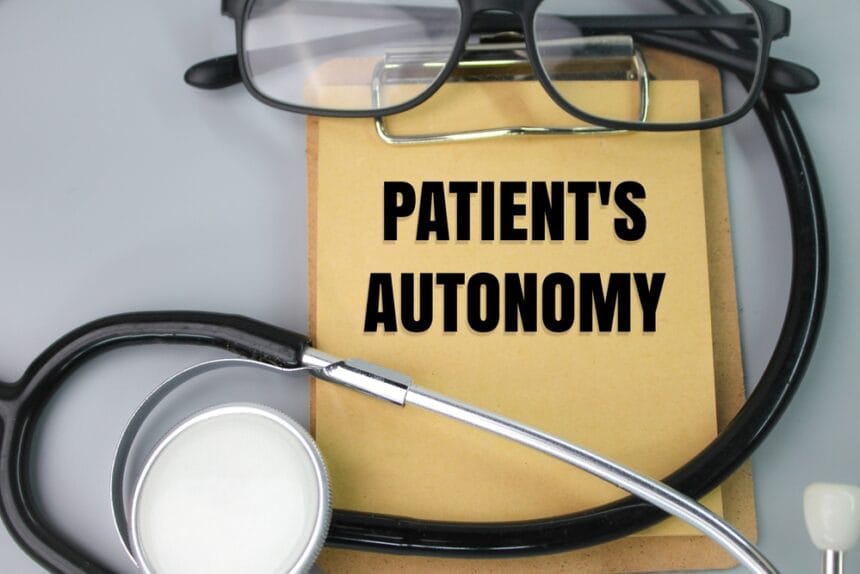Big data technology has unquestionably led to major changes in the healthcare system. Grandview Market Research estimates that the market for data analytics in healthcare will be worth over $50 billion next year.
One of the biggest benefits of big data in healthcare is that it helps promote greater autonomy, which leads to more specialized care. Big data revolutionized healthcare, fostering autonomy through personalized insights and proactive health management. By analyzing extensive datasets, healthcare providers can tailor treatment plans to individual needs, empowering patients in their healthcare decisions.
Predictive analytics identifies potential health risks, enabling early interventions and informed choices. Remote monitoring, facilitated by big data, allows individuals to actively engage in their health, with wearable devices providing real-time data for self-monitoring.
Healthcare apps and platforms deliver personalized information, symptom tracking, and wellness advice, giving people the tools to manage their well-being. Clinical decision support systems aid both healthcare professionals and patients in making evidence-based decisions collaboratively. Efficient healthcare operations driven by big data enhance responsiveness to individual needs. Research and development benefit from data-driven insights, accelerating medical advancements. Overall, big data in healthcare promotes autonomy by providing tailored information, encouraging proactive health behaviors, and improving decision-making for both patients and providers.
Specialized patient care makes up the majority of all medical visits. As such they become the bulk of medical care that is practiced. With all the complications that come with providing adequate health care services today it can be challenging and even draining for people to have a good patient care experience.
Here are some ways in which specialized patient care can be enhanced in the healthcare system.
Ways to Improve Patient Care
Wait Times
Let’s start at one of the most obvious and seemingly inevitable issues that accompanies medical visits: wait times. Wait times are just a presumption — a dreaded one at that— of having to visit any hospital or medical office. Why is it that, in nearly every other industry and business situation when an appointment is made, the time set becomes the time that someone is seen, but the medical industry is beyond this standard?
Regardless as to whether anyone can provide an answer to this standard behavior, medical companies can easily begin to improve their patient care experience by rewriting this trend at an office-by-office basis. Some basic practices, if they are not already in place, would go a long way to making people feel cared for even before they make it to the doctors.
Offer Telehealth Services
The pandemic made it very clear that human beings and businesses have the aid of technology which enables them to create and offer a variety of ways by which to communicate. With the drastic and necessary changes which accompanied patient care during the pandemic, medical offices had to become clever about how and when to serve clients.
One result of that time was the enhancements of telehealth services as an addition or supplication of traditional office visits. Telehealth options and their accompanying digital services can sometimes make it easier for patients to receive the care they need without all the extra time, traveling, and effort that comes with traditional office visits.
For those people who are less mobile, or may not have access to easy transportation this can be a wonderful alternative. Additionally, busy people can have much more flexibility and ease by which to navigate and care. With most medical information already being stored in digital formats, communication and services also being readily accessible via computer or smartphone devices, it only makes sense to extend those streamlined services to these devices.
Acknowledging Caregivers
There is a large portion of medical visits today that involve patients being assisted by caregivers. Considering that many of the population going to regularly see doctors are of the older demographic this makes sense, but in acknowledging this it’s safe to presume that those patients are likely to be accompanied by caregivers. Whether family members, friends, or professional healthcare services, caregivers have become a major part of that patient’s healthcare experience.
Depending on the condition, there may need to be a greater attention given to caregivers than on the patients themselves, at least in the explanation of and addressing of evidence based medical information. To not acknowledge these factors as a reality in many medical visits is to overlook and thus complicate what can already be an emotionally trying experience.
For those medical professionals that can be more attentive and patient with caregivers, that care can directly extend to patients. This should be regular practice, not just because it may be logistically pertinent but because it is socially responsible.
Reduction of Administrative Burdens
For anyone who is not personally and professionally familiar with the ins- and outs of running a medical office or building, it might be surprising to learn how much goes into healthcare management. The number of systems, teams, departments, staffing necessities, supply stock, and logistical management can be daunting.
For those professionals who work in those complex environments day to day it can become very stressful when those systems and procedures are not working according to plan— especially if they are RN’s who are desiring greater autonomy. When those complications or setbacks occur they can create great strain on the ability of medical teams to effectively perform their jobs. Hospitals and offices which explore and implement new solutions to streamline as many systems as possible create more time for attentive care for patients.








